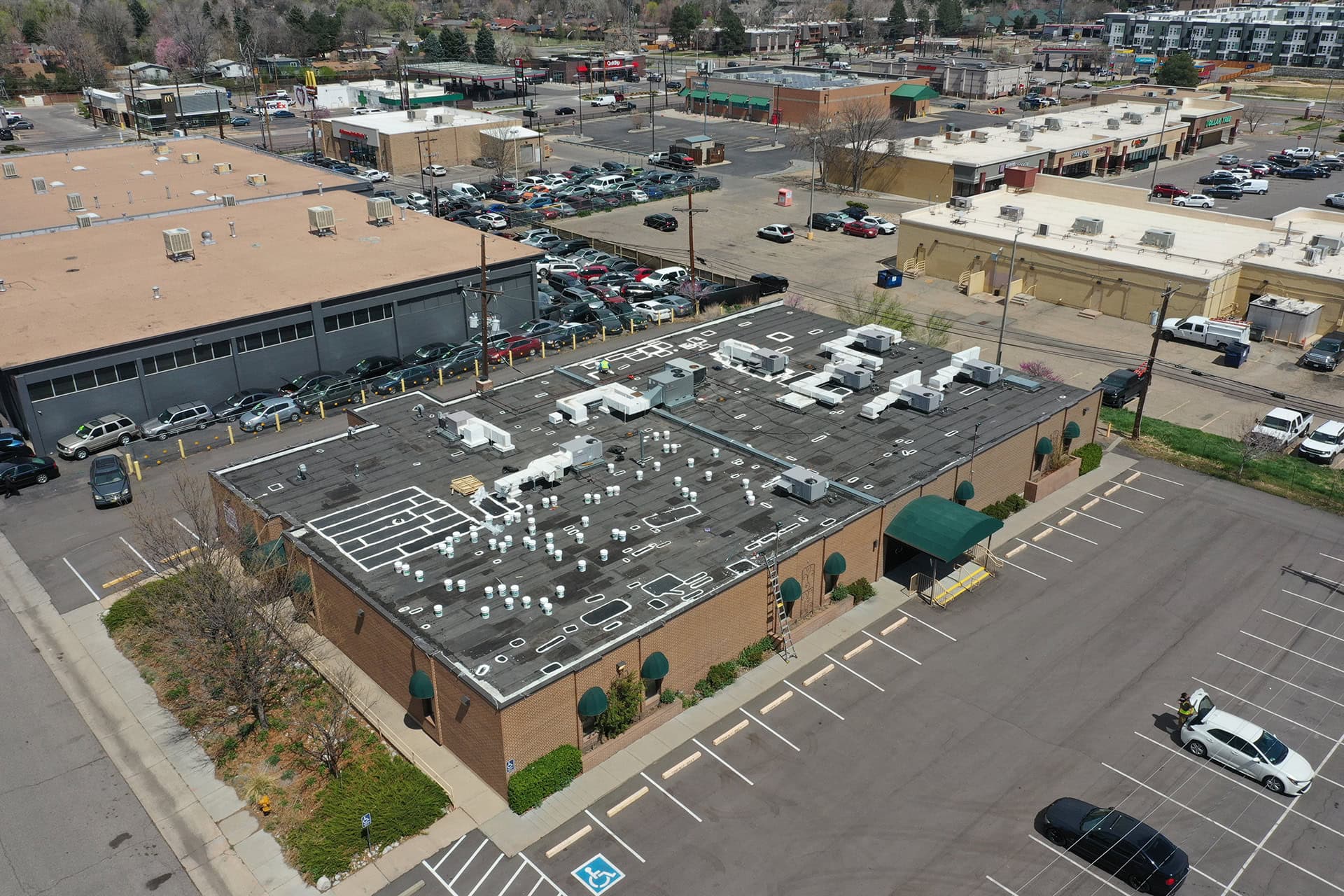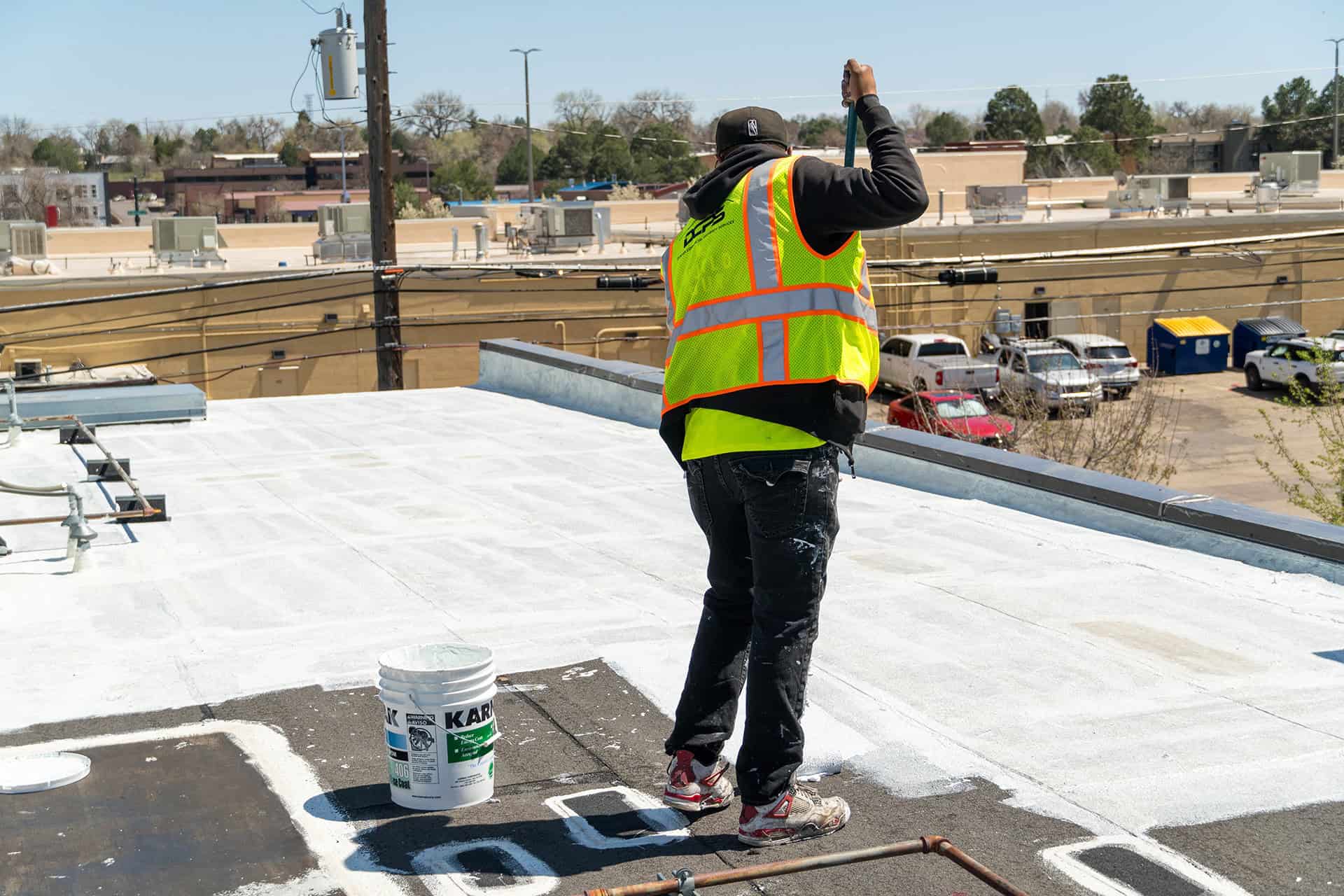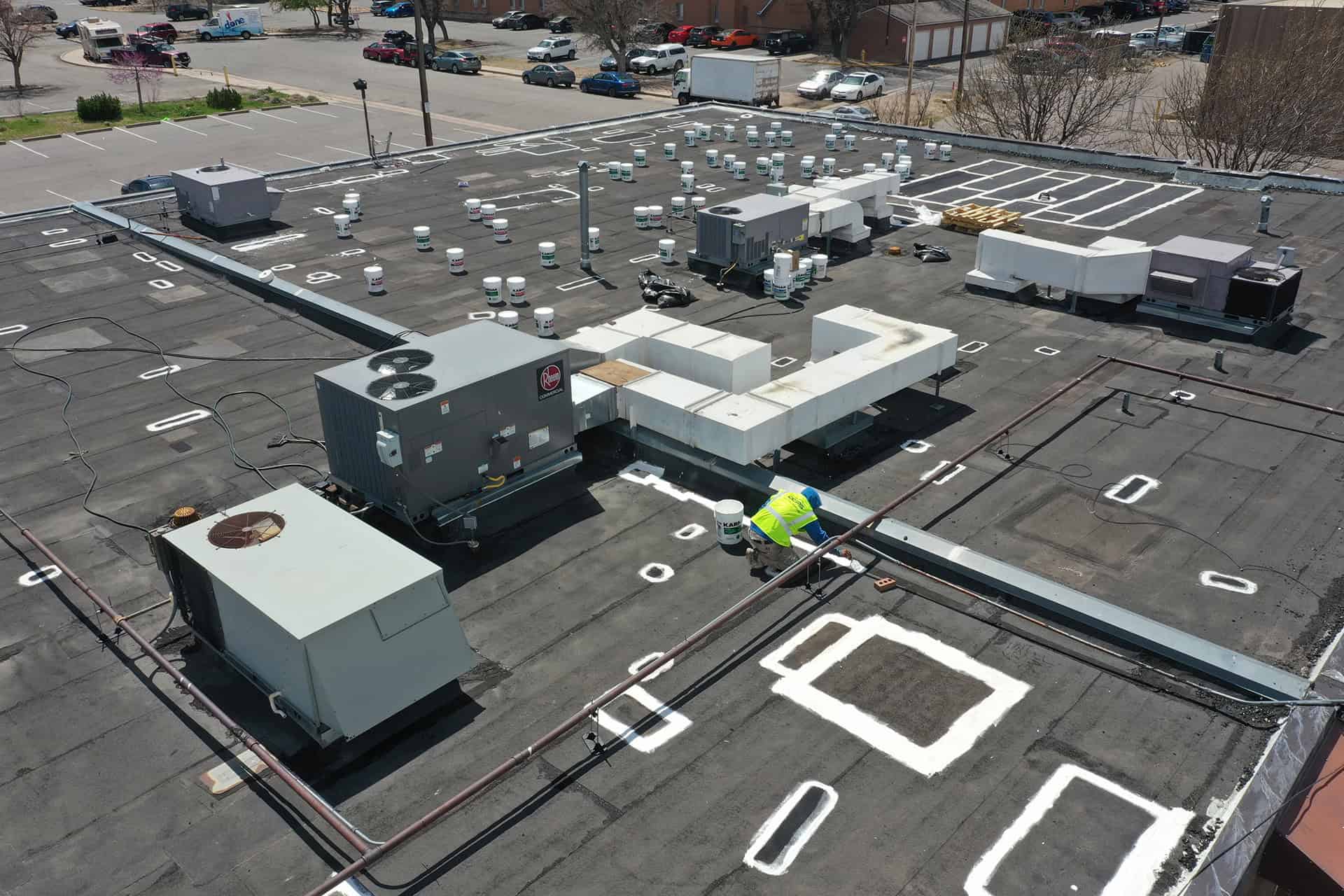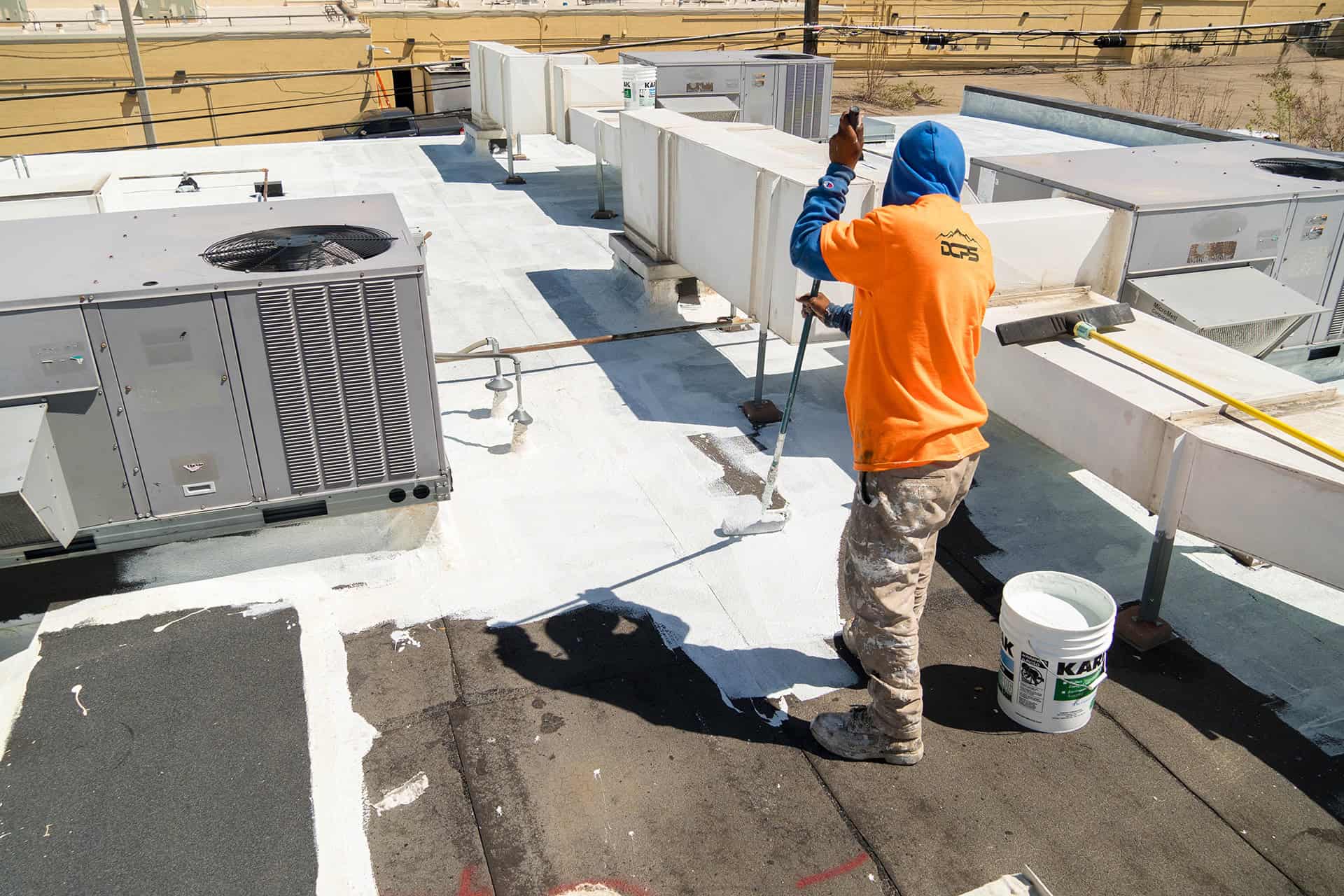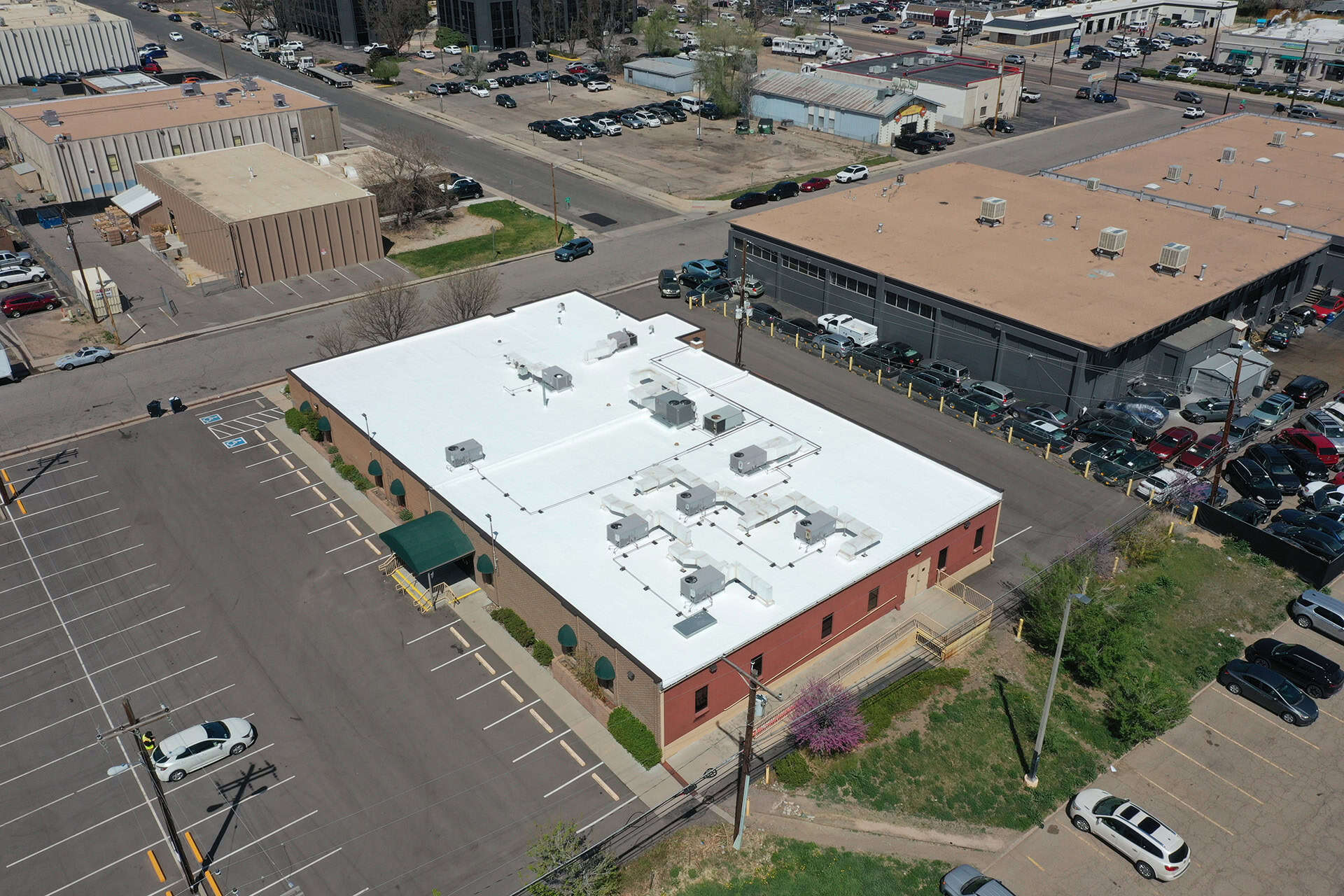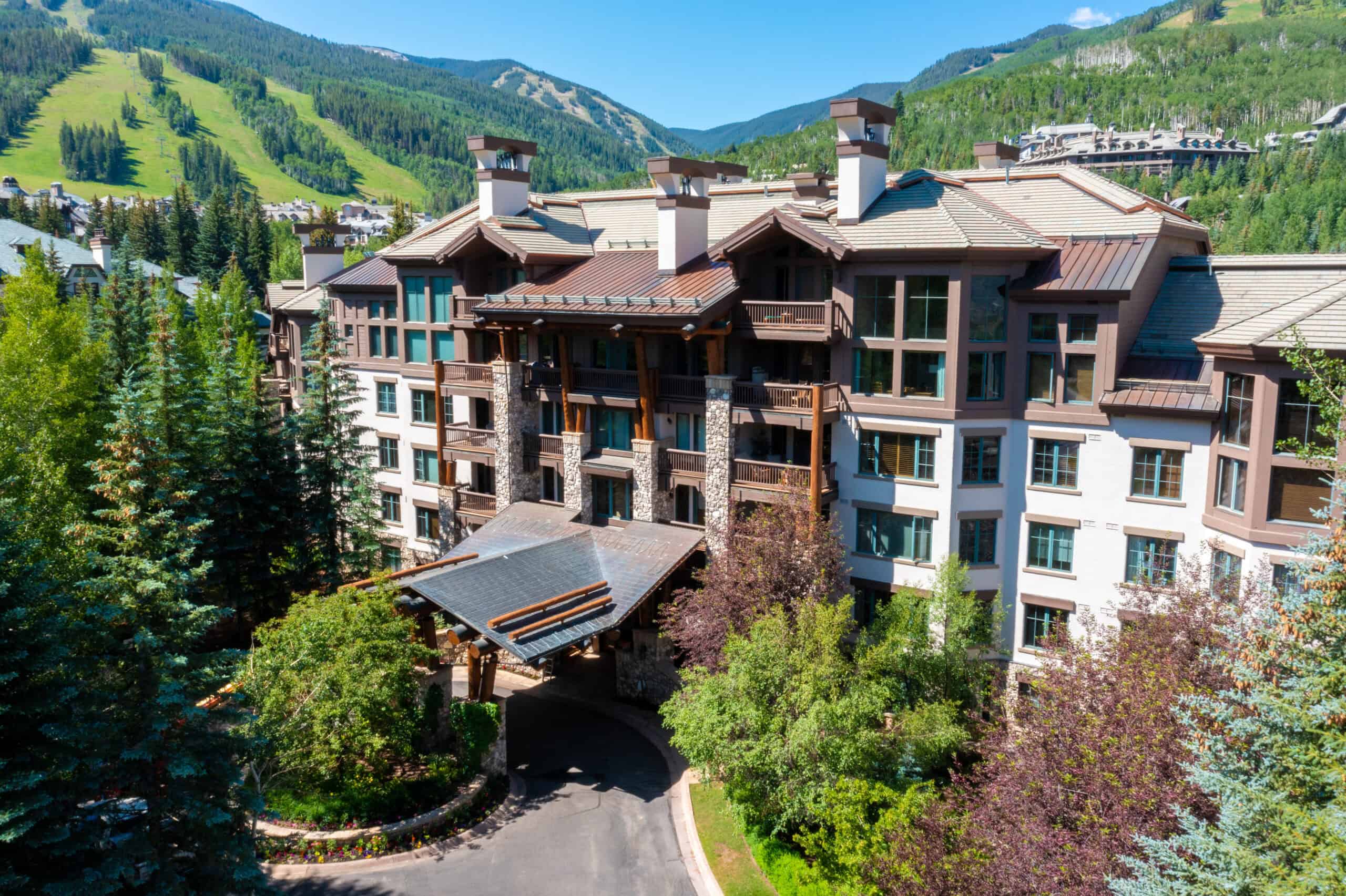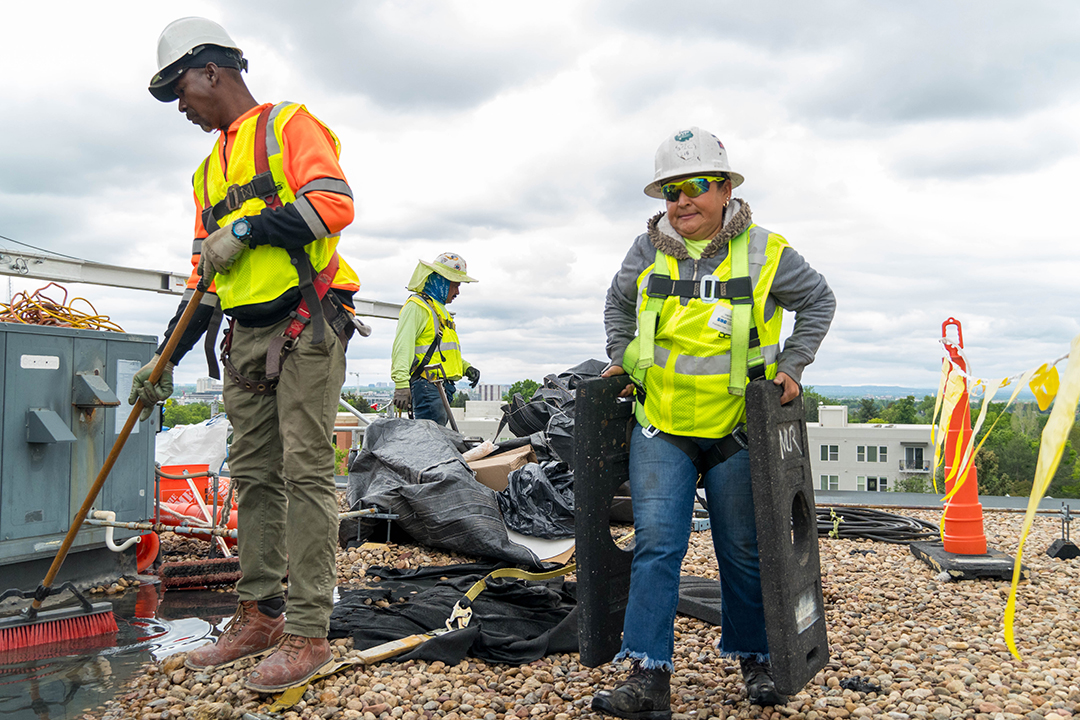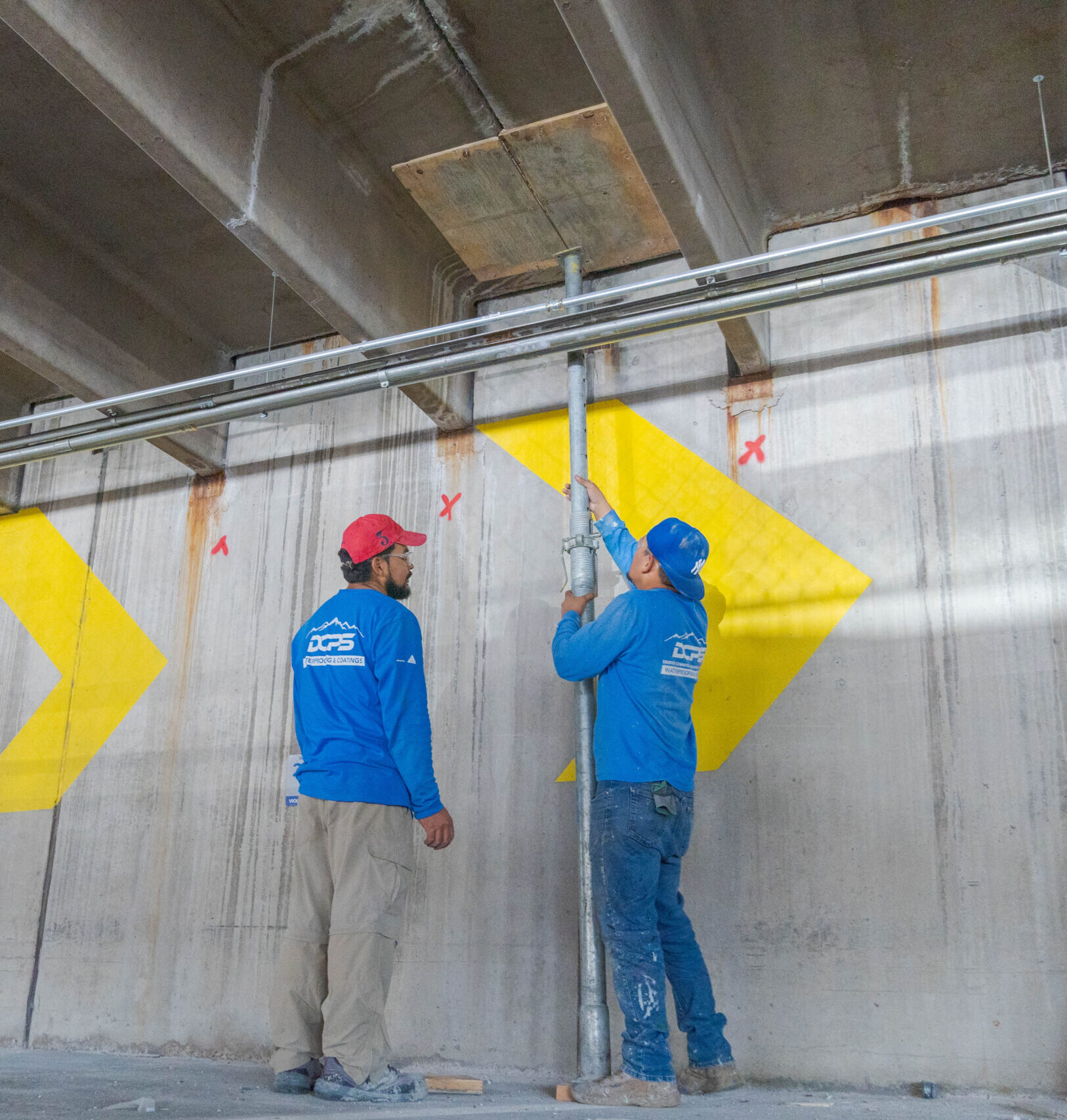Church Meeting Hall
Church Meeting Hall
Location
Summary
Challenge
Solution
The process began with thermal imaging, destructive testing, and core sampling to identify the compromised areas of the roof system. Once testing was completed, the open cores were sealed using torch-down roofing membrane. Based on the findings, the DCPS team removed and replaced the water-damaged sections of the roof. One-way vents were installed in high-risk areas to promote ventilation and prevent future saturation, and the drip edge area was sealed and repaired with rubberized cement to protect the area from future water intrusion.
To further enhance roof integrity, approximately 378 linear feet of deteriorated parapet cap metals were removed and replaced. Repairs were made to the underlying membrane, and the seams were sealed to ensure long-term waterproofing.
After the completion of all the repairs, the roof was thoroughly cleaned and prepared for coating. A multi-layer coating system was applied, including a base layer, seam and penetration reinforcement fabric, an additional coat over detailing areas, and a final topcoat designed to provide long-term durability and energy efficiency. All work was completed in accordance with the specifications required for a 10-year system warranty, extending the roof’s lifespan and ensuring long-term protection.
